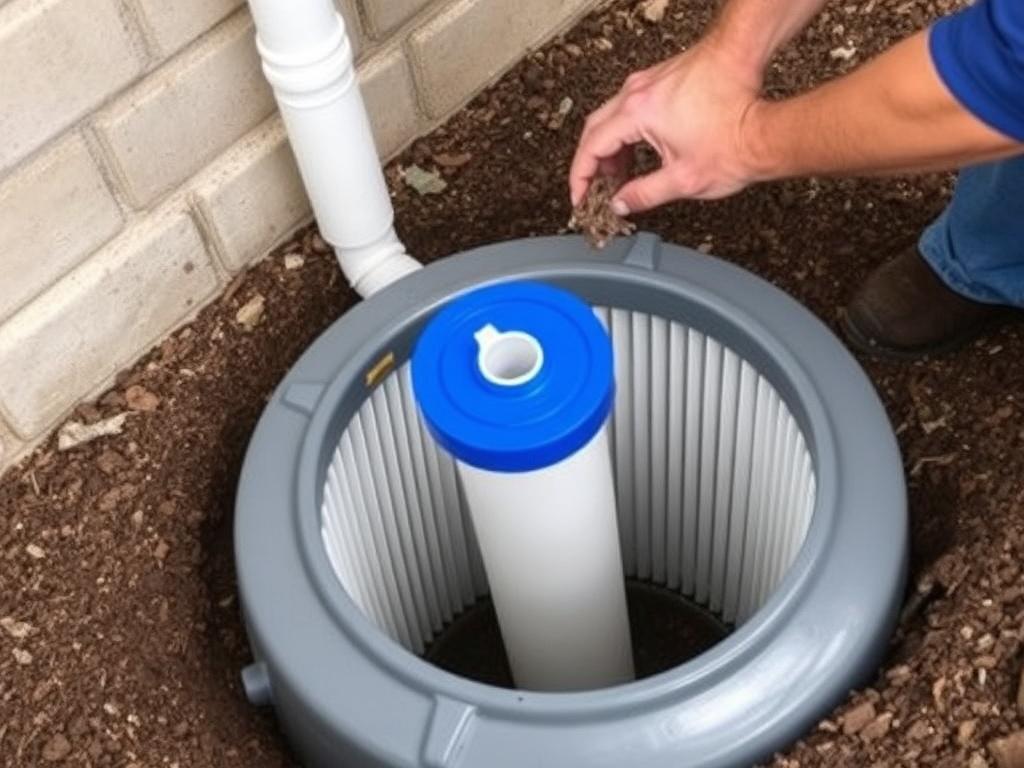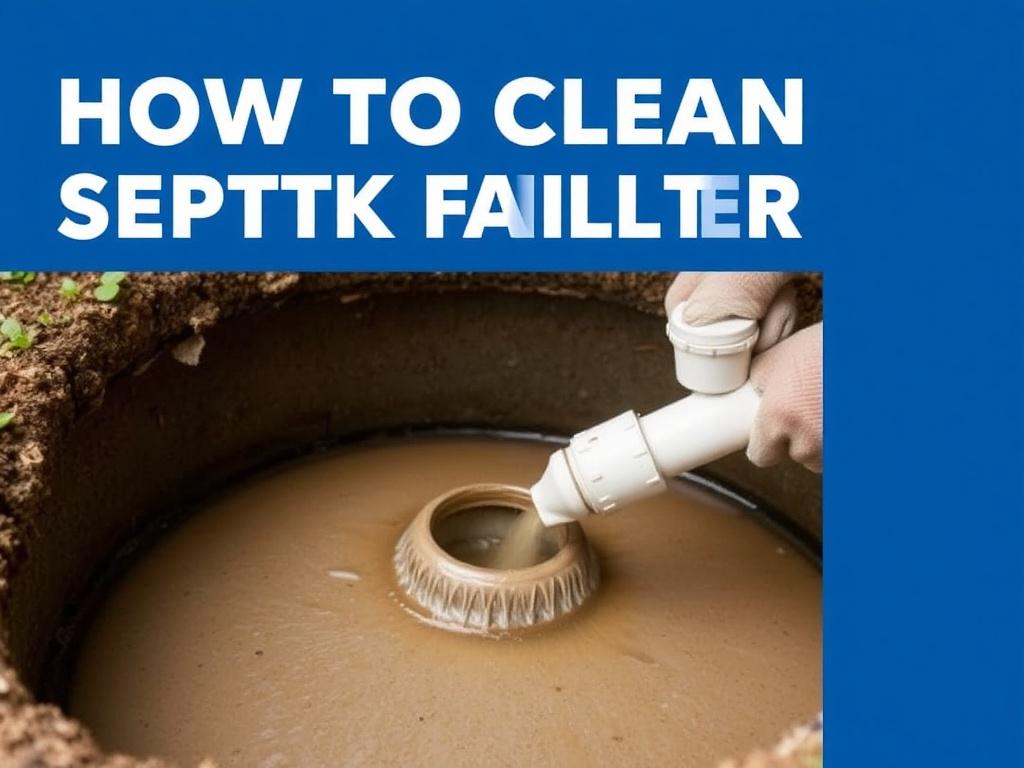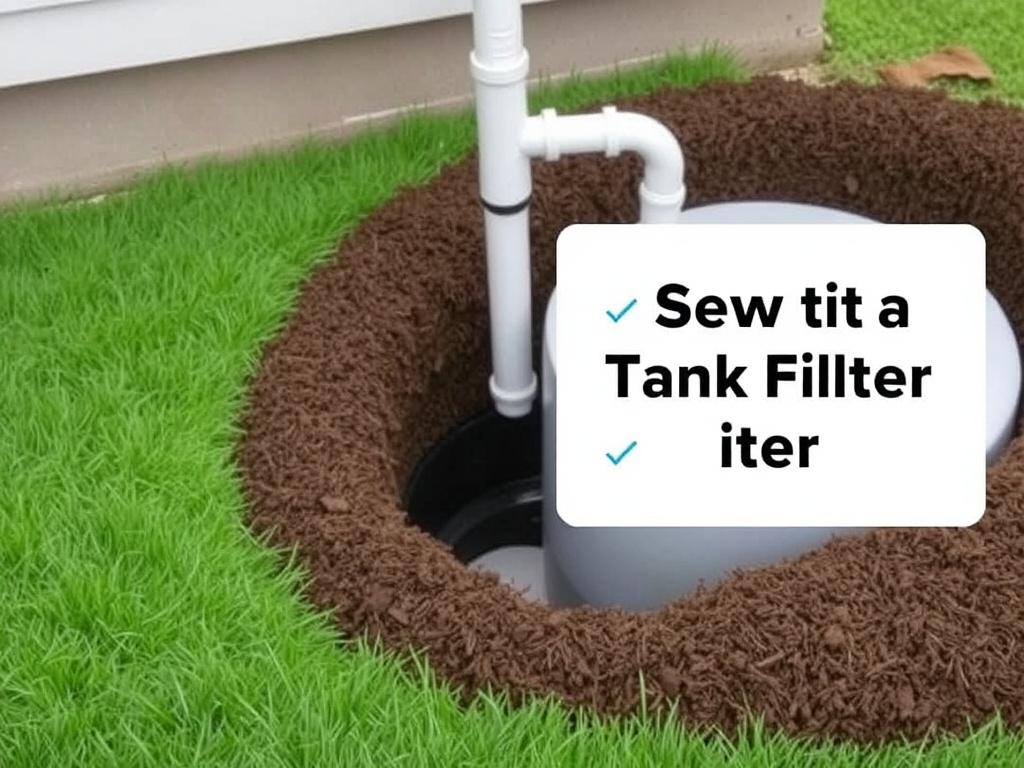Maintaining a septic system is crucial for every homeowner who relies on one. Among the various components, the septic tank filter plays a key role in keeping the system working efficiently. Over time, this filter collects solids and debris, which can clog it and cause backups or drain field problems. Learning how to clean a septic tank filter is an essential skill that can save you costly repairs and maintain the health of your system. Don’t worry if you’re unfamiliar with septic systems – this guide will walk you through each step in a clear, conversational way.
If you’re new to septic tanks, you might not even realize that your system has a filter. Not all septic tanks include them, but many modern systems are equipped with them as an extra safeguard. The filter’s job is to keep solids inside the tank while allowing clear liquid to flow out into the drain field. When clogged, wastewater can’t flow properly, leading to unpleasant odors, backups, and even damage to your property. Regular cleaning of the septic tank filter ensures everything runs smoothly and extends the system’s life.
- Understanding Your Septic Tank Filter
- Why Cleaning Your Septic Tank Filter is Important
- How Often Should You Clean the Septic Tank Filter?
- Tools and Materials You’ll Need
- Step-by-Step Guide to Cleaning a Septic Tank Filter
- 1. Locate the Septic Tank Filter
- 2. Prepare Your Safety Gear and Work Area
- 3. Open the Tank Lid or Riser Cover
- 4. Remove the Septic Tank Filter
- 5. Inspect the Filter
- 6. Rinse and Clean the Filter
- 7. Dispose of Collected Debris Properly
- 8. Reinstall the Filter
- 9. Close the Tank Lid or Riser Cover
- 10. Clean Up and Sanitize
- Tips to Extend the Life of Your Septic Tank Filter
- Common Mistakes to Avoid When Cleaning Your Septic Tank Filter
- When to Call a Professional
- Summary Checklist for Cleaning a Septic Tank Filter
- FAQs About Cleaning Septic Tank Filters
- How often should I clean my septic tank filter?
- Can I use household cleaners to clean the septic tank filter?
- What if my septic tank doesn’t have a filter?
- Is cleaning the septic tank filter the same as pumping the tank?
- Can I do the cleaning myself or should I hire a professional?
- Conclusion
Understanding Your Septic Tank Filter

Before diving into the cleaning process, it helps to understand what the septic tank filter is and where to find it. Septic tank filters are usually installed in the outlet baffle or riser of the septic tank. They are designed to trap solids and prevent them from passing into the drain field, reducing the risk of clogging and system failure.
Typically, these filters resemble a plastic mesh or screen. Some models have a lid that you can open to access the filter, while others might require removing a cover or riser on top of the septic tank. Here are some common types of septic tank filters:
- Mesh screens: Fine plastic or wire mesh that captures large particles.
- Cartridge filters: Replaceable cartridge elements that trap solids.
- Sand filters: Less common, using sand or similar materials to filter wastewater.
Most filters are designed to be cleaned rather than replaced, but it’s important to regularly inspect them for damage. Knowing your septic tank filter’s type and location will guide your cleaning process and ensure you don’t accidentally damage any components.
Why Cleaning Your Septic Tank Filter is Important
Routine septic tank maintenance often focuses on pumping out solids, but cleaning the filter is just as critical. When the filter becomes clogged with sludge and debris, wastewater flow slows, and solids can overflow into your drain field. This can result in:
- System backups inside the home.
- Unpleasant odors around the septic area.
- Drain field damage, which is expensive to repair.
- Faster wear and tear on the entire septic system.
Here’s a simple comparison of a septic system with a clean filter versus a clogged one:
| Aspect | Clean Septic Tank Filter | Clogged Septic Tank Filter |
|---|---|---|
| Wastewater Flow | Unobstructed and smooth | Restricted and slow |
| Risk of Backups | Minimal | High |
| Drain Field Health | Protected and functioning well | Prone to clogging and failure |
| Maintenance Frequency | Periodic cleaning and inspection | May require emergency repairs |
Cleaning the septic tank filter is a simple way to keep the system healthy, avoid costly repairs, and prevent environmental damage. Many septic professionals recommend cleaning the filter every 1 to 3 years, depending on household size and usage.
How Often Should You Clean the Septic Tank Filter?
The frequency of cleaning your septic tank filter depends on several factors:
- Household size: More people mean more wastewater and solids.
- Water usage habits: Excessive water use or flushable items impact filter clogging.
- Type of septic system: Advanced systems might have different maintenance needs.
- Age of the system: Older systems might require more frequent checks.
In general, it’s a good idea to inspect the septic tank filter annually. If after inspection you notice excessive build-up of solids or the system shows signs of sluggishness, schedule a cleaning. Some filters come with a clear riser cover that lets you visually check the filter’s condition – take advantage of this to avoid waiting until a backup occurs.
Tools and Materials You’ll Need
Before you start cleaning your septic tank filter, gather the necessary tools and supplies to make the job easier, safer, and more efficient:
- Rubber gloves (heavy-duty, waterproof)
- Protective eyewear
- A flashlight or headlamp (to see inside the tank or riser)
- A garden hose or bucket of clean water
- A septic filter brush or soft brush (optional, for scrubbing)
- A scoop or small bucket (to remove debris)
- Cleaning rags or paper towels
- Plastic bags (for disposing of filter debris)
- Sanitizer or disinfectant spray (for cleaning tools and area)
Safety should always come first since septic systems contain harmful bacteria and gases. Wearing appropriate protective gear is essential, and working in a well-ventilated area helps reduce risk.
Step-by-Step Guide to Cleaning a Septic Tank Filter
Cleaning the septic tank filter is a straightforward process when you know the steps. Follow this method to avoid any damage and maintain your system’s efficiency:
1. Locate the Septic Tank Filter
Start by locating the septic tank lid and riser cover. The filter will be inside the outlet baffle or riser, usually at the tank’s outlet pipe where wastewater leaves the tank. If you don’t know where the tank is, check your home’s septic system map or consult a professional.
2. Prepare Your Safety Gear and Work Area
Put on your rubber gloves and protective eyewear. If possible, open windows or doors near the work area to ensure proper ventilation. Remove any debris from around the tank lid for easier access.
3. Open the Tank Lid or Riser Cover
Remove the tank lid or riser cover carefully. Septic tank lids can be heavy, so use caution. If needed, use tools to loosen bolts or screws.
4. Remove the Septic Tank Filter
Once the riser or outlet baffle is open, gently take out the filter. Avoid sloshing tank contents or dropping the filter in the tank. If it’s secured with clips or fasteners, undo them carefully.
5. Inspect the Filter
Use your flashlight to check for heavy debris buildup or damage. If the filter looks intact, proceed to cleaning. If it’s cracked or broken, consider replacing it.
6. Rinse and Clean the Filter
Use a garden hose to rinse off solid waste and sludge trapped on the filter. You can use a soft brush to scrub stubborn debris gently. Avoid using harsh chemicals that could harm the septic system’s beneficial bacteria.
7. Dispose of Collected Debris Properly
Place the debris and rinsed sludge in plastic bags or a bucket for proper disposal. Do not flush any of this material down the drain or toilet.
8. Reinstall the Filter
After thoroughly cleaning and rinsing, reinstall the filter in its original position. Secure any fasteners or clips as before.
9. Close the Tank Lid or Riser Cover
Replace the tank lid securely to prevent any accidents, odors, or entry of surface water into the tank.
10. Clean Up and Sanitize
Clean your tools and gloves with sanitizer or disinfectant after the job. Wash your hands thoroughly even if wearing gloves.
Tips to Extend the Life of Your Septic Tank Filter
Once you know how to clean a septic tank filter, it’s beneficial to adopt habits that prolong its life and reduce the frequency of cleanings. Here are some helpful tips:
- Avoid flushing non-biodegradable items like wipes, sanitary products, or grease.
- Keep excessive water usage to a minimum to prevent overloading the system.
- Use septic-safe cleaning products to protect the beneficial bacteria inside the tank.
- Have your septic tank inspected and pumped regularly by professionals.
- Divert roof drains and surface water away from the drain field area.
By following these simple practices, you’ll keep your septic tank filter cleaner longer and protect your entire system.
Common Mistakes to Avoid When Cleaning Your Septic Tank Filter
While cleaning a septic tank filter might not be complicated, some common mistakes can cause problems:
- Neglecting safety gear: Exposure to harmful bacteria and gases can be dangerous.
- Using harsh chemicals: Chemical cleaners can kill beneficial bacteria and damage your system.
- Attempting to clean without knowledge: Some filters require professional handling; know your system.
- Forgetting to check the condition of the filter: Cleaning an old or damaged filter won’t help; replace if needed.
- Not repairing or sealing the tank lid properly: This can lead to odors, contamination, or accidents.
Avoiding these pitfalls ensures your septic system continues functioning efficiently, saving you time and money.
When to Call a Professional

While many homeowners can clean the septic tank filter themselves, there are situations when professional help is the best choice:
- If you suspect serious damage to the filter or tank.
- If you’re unsure about your system’s layout or components.
- When the septic system is backing up despite cleaning efforts.
- If you experience strong odors or soggy areas near the tank or drain field.
- If you feel uncomfortable performing the cleaning yourself.
Septic professionals have the training and equipment to safely manage your system and diagnose potential issues. Regular professional inspections complement your routine maintenance efforts for a healthy system.
Summary Checklist for Cleaning a Septic Tank Filter

Here’s a handy checklist you can print or save to ensure you don’t miss any crucial steps:
| Step | Action | Tips |
|---|---|---|
| 1 | Locate the filter | Consult system map, check outlet baffle or riser |
| 2 | Wear safety gear | Gloves, eyewear, and ventilated area |
| 3 | Open tank lid or riser | Use tools if necessary, avoid injury |
| 4 | Remove filter carefully | Avoid damaging clips or dropping filter |
| 5 | Inspect filter condition | Check for cracks or excess buildup |
| 6 | Clean filter with water and brush | No harsh chemicals |
| 7 | Dispose of residual debris safely | In sealed bags, not flushing down drains |
| 8 | Reinstall filter securely | Ensure fasteners are tight |
| 9 | Close tank lid properly | Seals the tank to prevent odors and hazards |
| 10 | Clean up and sanitize tools | Prevents contamination and odors |
FAQs About Cleaning Septic Tank Filters
How often should I clean my septic tank filter?
Most manufacturers recommend cleaning the filter every 1 to 3 years, but inspecting it annually is best practice.
Can I use household cleaners to clean the septic tank filter?
No, avoid harsh chemicals that can harm the beneficial bacteria in your septic system. Use only water and gentle brushes.
What if my septic tank doesn’t have a filter?
Not all septic tanks have filters. If unsure, consult your septic system documentation or a professional.
Is cleaning the septic tank filter the same as pumping the tank?
No, pumping removes sludge and solids from the tank, while cleaning the filter clears the screen of debris to maintain flow.
Can I do the cleaning myself or should I hire a professional?
Many homeowners can clean the filter themselves if they follow safety precautions and understand their system. However, call a professional if unsure or if problems persist.
Conclusion
Cleaning your septic tank filter may sound like a daunting task, but it’s an important part of septic system maintenance that you can confidently handle. Understanding the function of the filter, inspecting it routinely, and cleaning it properly will keep your system flowing smoothly and prevent costly repairs. With the right tools, safety gear, and a systematic approach, you can easily master how to clean a septic tank filter and protect your home’s wastewater system for years to come. Don’t forget to combine this with regular septic tank pumping and professional inspections to enjoy a trouble-free septic system that serves your household well.
Помогла вам статья?






